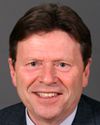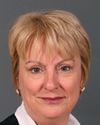Let me show you where exploration is; I think that's an important point to get across, especially to this committee.
Five countries are partners in the international space station. There are 14, maybe 15, countries that have actually produced a major piece that has gone up and been assembled on the international space station, and there are 80 countries that use the data. This aspect of international cooperation on the most complex technical project ever is perhaps the best thing we are doing. We can show the youth of today that it's possible, when you work together, to do something that is technically quite phenomenal.
In terms of exploration, these countries have gotten together and strategized about where we should go and what we should do next. They have written a document; Canada played a lead role in writing this document, as did the other four major partners, about what we should do next. Should we go to the moon, should we visit asteroids, should we go to Mars, should we make use of the Lagrangian points? These are the stationary points between the Earth and the moon that are very good places to put astronomical equipment. That strategy has been written and agreed to.
China has already made their strategy. About 10 years ago they said that they would, first, get into space; second, put a human into space; third, put two humans into space; fourth, have a space station up there. They said they would do all that in 10 years. I think you would probably agree that if we didn't laugh at them, we smiled gently, because we did not believe that was possible.
Well, they have executed that plan exactly as they planned to do. Their space station isn't a space station like this one here--it's simply two different vehicles put together, and it is a somewhat different environment--but their future plans have them going to the moon and going to Mars. Russia has a similar strategy. The question is, what are the Americans going to do?
The Americans just had the White House commission that Obama set up, chaired by Norm Augustine. Each of the partners went down and testified. I represented Canada and testified there.
They were very interested in knowing the efficiencies that would be required to keep the partnership that's on the international space station and then head out to the other parts of the solar system. They wanted to know what Canada would do. This was all discussion. It was not decision, but discussion. What would Canada do?
The approach we took was that if the US decides to go to the moon, this is what we will do. If the US decides to go to Mars, this is what we will do. This is because we are a small player and can't direct the show, if you like.
I think that was a very diplomatic approach to take. The option that is coming forth with Obama is to perhaps not go to the moon. They are leaning away from going to the moon and they're deciding to go to asteroids and Lagrangian points as they go toward the planet Mars.
The information you have seen in the media recently about the Obama speech that was made down at the Kennedy Space Center in April is not correct. They basically said exploration is cancelled, etc. That was not true. What they did was to cancel the crew vehicle, because they had design issues with the crew vehicle. They cancelled the small rocket that was going to launch that small crew vehicle because there were design issues, and at this stage in the program they didn't want those design issues.
Given the fact that there were those design issues, the policy people around Obama said that if they go to Mars, they should do it with new technology. Space has always driven innovative technology to the next step, so they should do it with new technology. Obama's last budget froze all spending in the government and cut most discretionary funding, but he added $6 billion more to the NASA budget to go after those new technologies, the idea being to get them to Mars sooner.
That is the truth about what they are trying to do.










